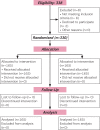Effectiveness of injecting lower dose subcutaneous sterile water versus saline to relief labor back pain: Randomized controlled trial
- PMID: 33537564
- PMCID: PMC7848597
- DOI: 10.18332/ejm/85793
Effectiveness of injecting lower dose subcutaneous sterile water versus saline to relief labor back pain: Randomized controlled trial
Abstract
Introduction: The aim of this study was to investigate the effect of a lower dose subcutaneous sterile water injection technique versus subcutaneous saline injection, on the relief of low-back pain for women during childbirth, and to explore the lasting effects of pain relief after administration (followed at 15, 30, 45, 90 and 120 minutes).
Methods: A prospective randomized controlled single-blinded study was conducted, with trial registration (NCT02813330). Women received one-time injections (sterile water or saline) and the effectiveness was observed at 15, 30, 45, 90 and 120 minutes after the intervention.
Results: The intervention group had statistically significant pain reduction. Assessment of subsequent pain, followed at 30, 45, 90 and 120 minutes, reflected an increasing change with a statistically significant difference. The intervention group had more burning sensations than the control group with a statistically significant difference.
Conclusions: The modified technique of double injections of subcutaneous 'water/ saline' resulted in significant relief of low-back pain during childbirth.
Keywords: back pain; effectiveness; labor; lower dose; sterile water; subcutaneous injection.
© 2018 Fouly H.
Conflict of interest statement
The authors have completed and submitted the ICMJE Form for Disclosure of Potential Conflicts of Interest and none was reported.
Figures
Similar articles
-
Effectiveness of subcutaneous injection of sterile water to the lower back for pain relief in labor.Acta Obstet Gynecol Scand. 2009;88(2):231-3. doi: 10.1080/00016340802635534. Acta Obstet Gynecol Scand. 2009. PMID: 19096945 Clinical Trial.
-
Effect of topical local anaesthesia on injection pain associated with administration of sterile water injections - a randomized controlled trial.BMC Anesthesiol. 2022 Feb 1;22(1):35. doi: 10.1186/s12871-022-01573-0. BMC Anesthesiol. 2022. PMID: 35105307 Free PMC article. Clinical Trial.
-
Sterile water injections for childbirth pain: An evidenced based guide to practice.Women Birth. 2018 Oct;31(5):380-385. doi: 10.1016/j.wombi.2017.12.001. Epub 2017 Dec 11. Women Birth. 2018. PMID: 29241699
-
Sterile water injections as treatment for low-back pain during labour: a review.Aust N Z J Obstet Gynaecol. 2008 Aug;48(4):369-74. doi: 10.1111/j.1479-828X.2008.00856.x. Aust N Z J Obstet Gynaecol. 2008. PMID: 18837842 Review.
-
Evidence reviews for sterile water injections: Intrapartum care: Evidence review C.London: National Institute for Health and Care Excellence (NICE); 2023 Sep. London: National Institute for Health and Care Excellence (NICE); 2023 Sep. PMID: 37856631 Free Books & Documents. Review.
Cited by
-
Comparing sucrose solution with distilled water for pain management in premature infant venipuncture: randomized clinical trial.Ann Med Surg (Lond). 2024 Jun 10;86(8):4512-4520. doi: 10.1097/MS9.0000000000002227. eCollection 2024 Aug. Ann Med Surg (Lond). 2024. PMID: 39118724 Free PMC article.
-
Comparison of the effect of mechanical massage and warm mechanical massage application on perceived labor pain and childbirth experience: A randomized clinical trial.Eur J Midwifery. 2021 Feb 27;5:5. doi: 10.18332/ejm/132883. eCollection 2021. Eur J Midwifery. 2021. PMID: 33655203 Free PMC article.
-
A Pharmacotherapeutic Approaches for Managing Labour Pain Using Synthetic Drugs and Natural Therapies.Comb Chem High Throughput Screen. 2024;27(9):1276-1285. doi: 10.2174/1386207326666230718144457. Comb Chem High Throughput Screen. 2024. PMID: 37464818 Review.
References
-
- Steel A, Adams J, Sibbritt D, Broom A, Frawley J, Gallois C. The influence of complementary and alternative medicine use in pregnancy on labor pain management choices: results from a nationally representative sample of 1,835 women. J Altern Complement Med. 2014;20(2):87–97. - PubMed
LinkOut - more resources
Full Text Sources




